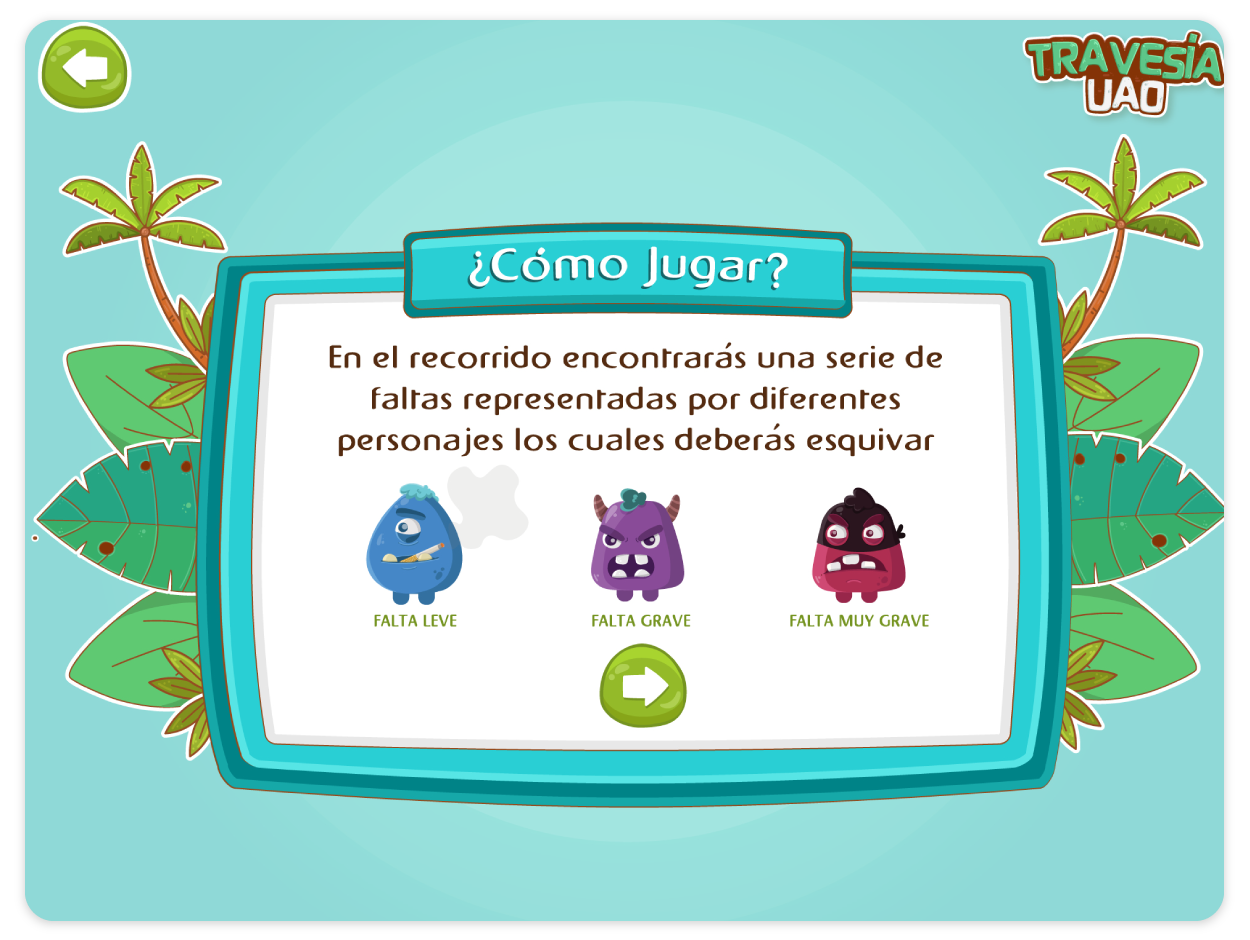The background
How did this start?
The Autónoma de Occidente University is a recognized Colombian university that has more than 11,000 students; as part of its institutional accreditation process must ensure the correct disclosure and appropriation of students of its code of ethics and conduct manuals within the campus, additionally feels the commitment to reduce the rates of calls to students because of ignorance of these rules.
The challenge
What do they look for?
That is why they are looking for the best way to teach the code of ethics to new students who enter every six months; they want to find the best way to capture their attention by taking advantage of the technological infrastructure they have. This is a process that, until that moment, was done manually in groups of 30 people, with a high cost of training, complicated logistics, and spending more than 600 hours of work for its employees a week.
The approach
Develop a digital gamification experience that allows learning the ethics manual of the university through a web platform in which it can be played individually and used by campus officials to train new students.
The idea is to place the student in a game where he must avoid obstacles that represent the main infractions of the rules and collect the attitudes that will lead him to complete his professional career. The student will find ten levels that represent each semester of his undergraduate, and each one will be recreated in emblematic places of the university; in this way, we can also highlight the qualities and benefits of the university campus.
The process
Iterate 1, 2, 3!
The first iteration of the project looked like this, it was approaching its dynamics to a platform game with a very cartoon look with 2D graphics; in this early stage, we managed to recreate the flow of users and the central dynamics of the game, we started thinking about that would be a punishment and that it would act as powers.

After some tests with users, we decided to change the character’s attire so that it would look more like a student within the university.


In another iteration, it was possible to define the enemies, the range of movement of the player, his first animations, the times for each level, and how the user interface would look.
After several designs, it was possible to find the desired aesthetics for the game, the scenarios, the central dynamics, the narratives, and the tutorial at the beginning of the experience.

The development
Time to code
We decided to develop the game with the Unity3D engine thanks to its short learning curve and ease when transferring it to multiple platforms. All the development was done in small Scrum sprints using C# as the primary language. At the end of the process, the game was exported to WebGL and published for those browsers with the support of this technology.
The design
How it looks the final product




BOOM!!!
Major learnings
This job was very challenging; many technologies and development techniques were unknown. I learned to negotiate the client’s vision as Product Owner and understood the limitations of time and knowledge of the team as a Scrum Master.
I start to follow the Scrum ceremonies and make delivery records to control possible changes in the development and achieve progress to meet the project deadline.
Future steps
Several users raised the need to be able to select different avatars to feel more identified when playing and be more inclusive. Many wanted to use a girl or an Afro-person possibly.
Another suggestion was to connect the game to a web platform or social network to compete with each other and share their achievements. The project developed in Unity3D can easily migrate with some adjustments to iOS and Android devices.
The team
Germán Gallego, ICT office director, Autónoma de Occidente University
David Portilla, art and game development direction
Susana Trejos, graphic designer
Mayren Peñaranda, graphic designer
Special thanks to Harold Satizabal for his accompaniment and teachings in the development part of this project.

